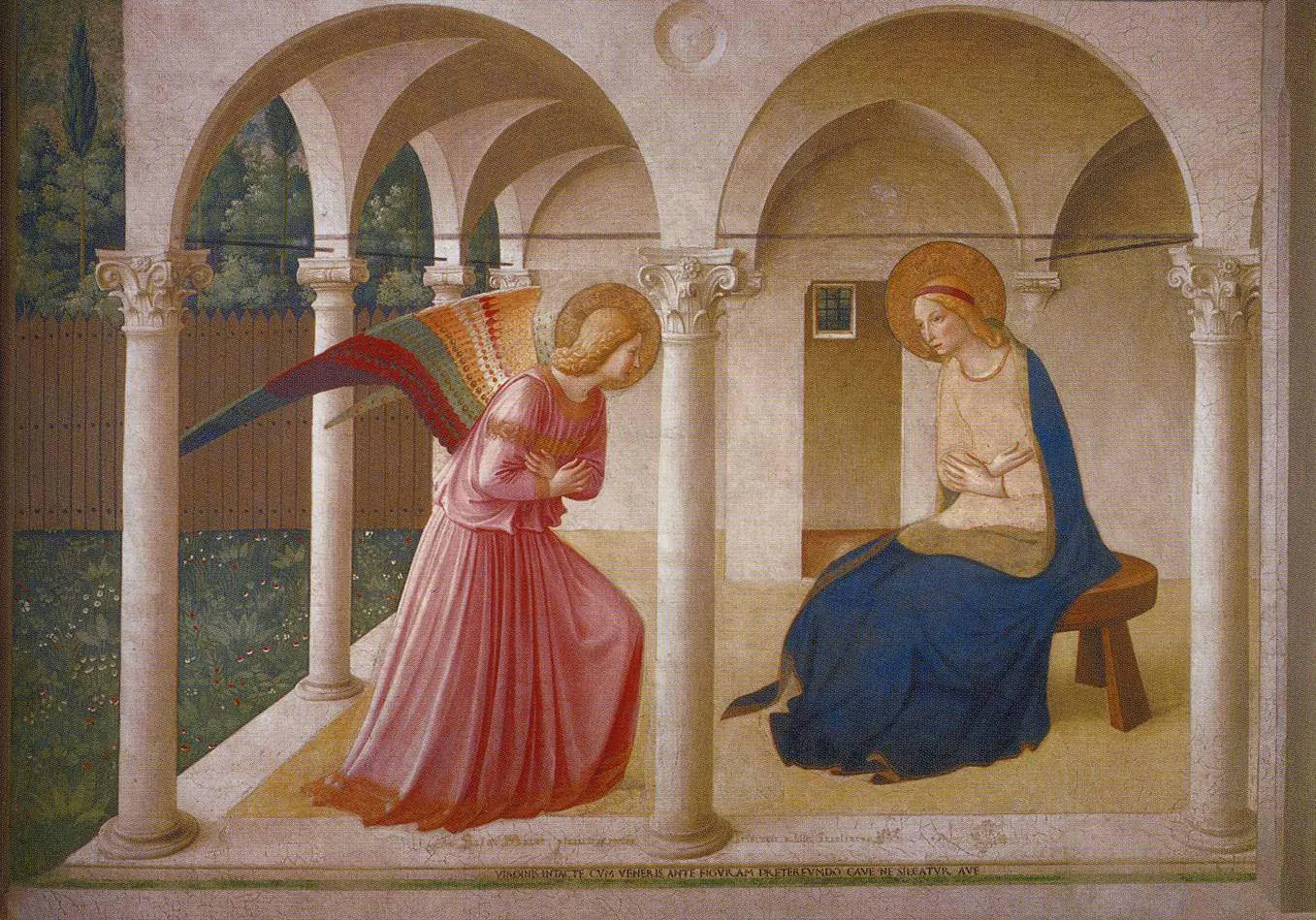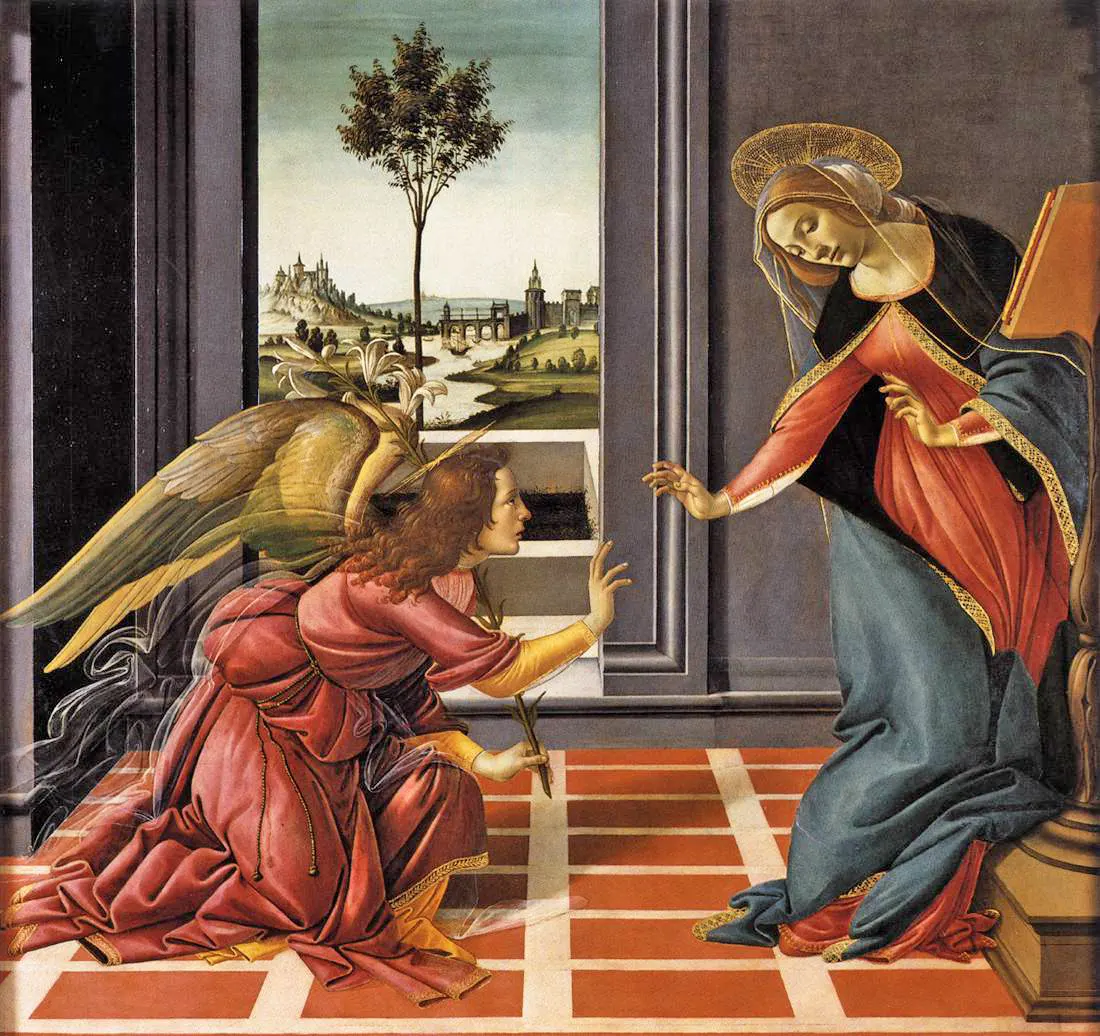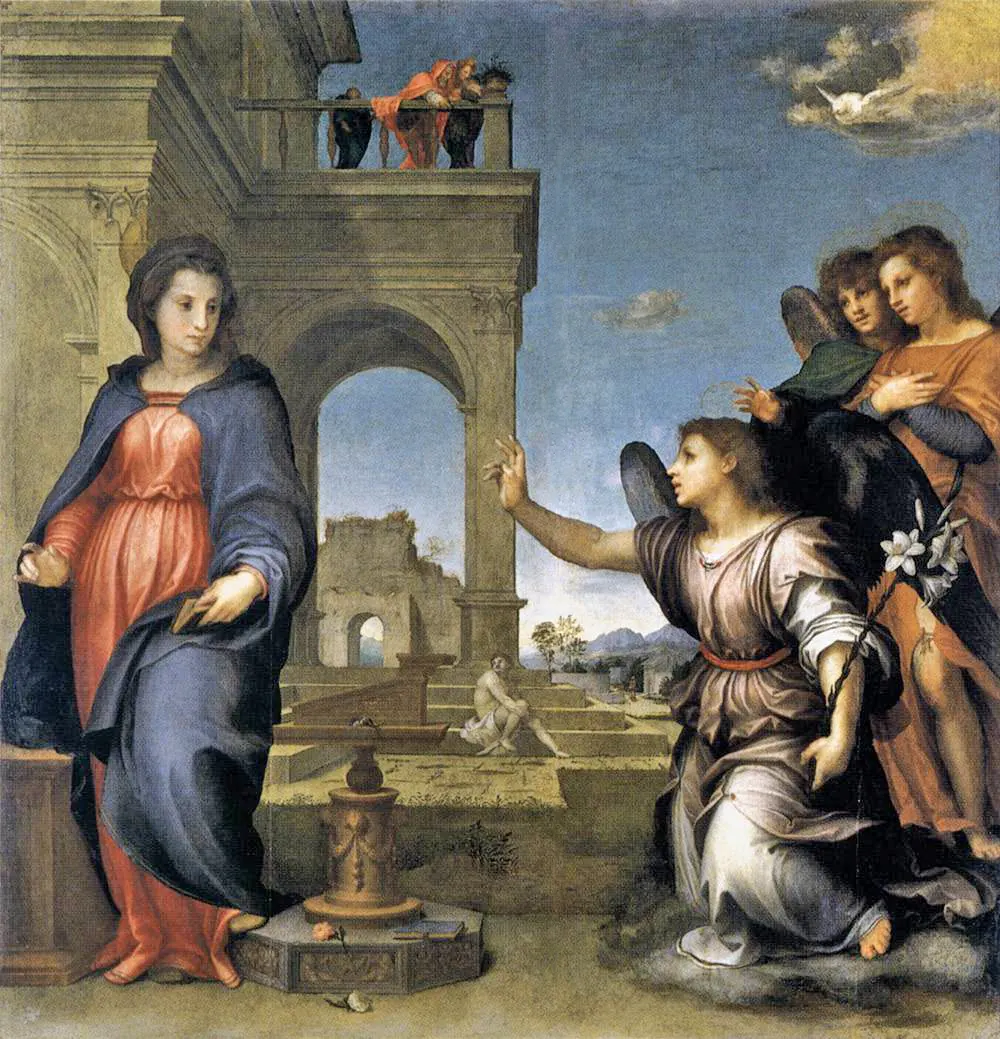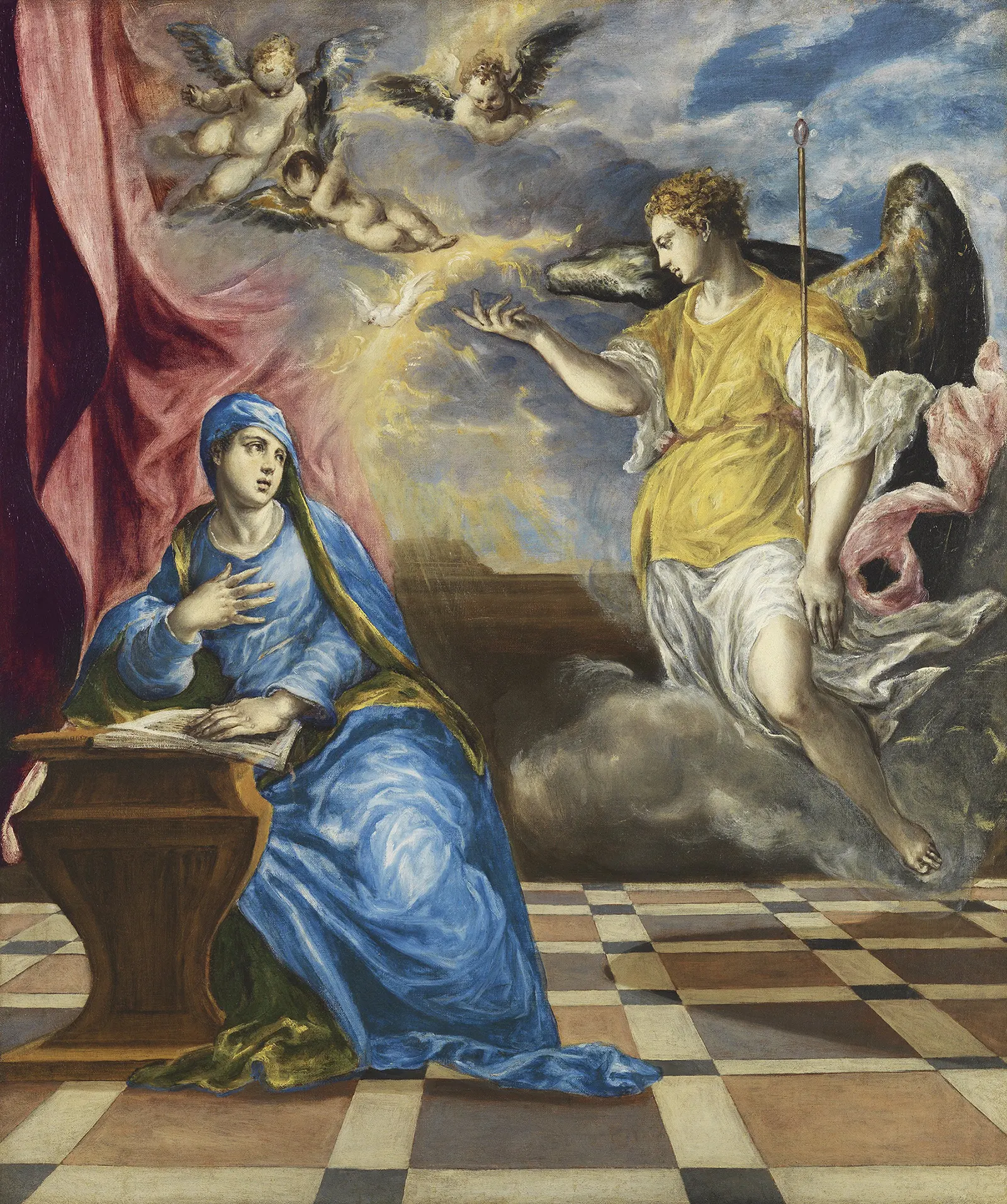The Annunciation is a symbol of Hope and Renewal, making it a fitting start to the year.
The Florentine calendar, used in Florence during the Renaissance, had a unique way of marking the year. Unlike the Gregorian calendar we use today, the Florentine calendar began the year on March 25, the Feast of the Annunciation (the day the Angel Gabriel announced to the Virgin Mary that she would bear Jesus). This date was considered the start of the new year in Florence and was tied to both religious and civic traditions.
Giotto, 1303
The Annunciation by Beato Angelico (circa 1440-1445) is a fresco preserved in the convent of San Marco in Florence.

Leonardo, 1472
Uffizi Gallery
One of Leonardo’s early works, this painting showcases his mastery of perspective, anatomy, and naturalism. The angel Gabriel kneels before Mary in a lush garden, with detailed botanical elements and a distant landscape.

Sandro Botticelli (1489)
Botticelli’s version is notable for its dramatic composition and emotional intensity. Mary appears startled, while Gabriel gestures emphatically, creating a dynamic interaction between the figures.
Andrea Del Sarto (1512)
Del Sarto’s version is celebrated for its soft, harmonious colors and balanced composition. The figures are elegantly posed, with a serene and contemplative mood.


El Greco (1576)
El Greco’s version is dramatic and expressive, with elongated figures and vibrant colors. The painting reflects his unique style, blending Byzantine and Western artistic traditions.
Titian 1559
Titian’s late Renaissance interpretation is dynamic and full of movement. The angel Gabriel bursts into the scene with energy, while Mary reacts with a mix of surprise and reverence.
Caravaggio 1608
Caravaggio’s version is notable for its realism and dramatic use of chiaroscuro (light and shadow). The scene is intimate and humanized, with Mary depicted as a young, ordinary woman.